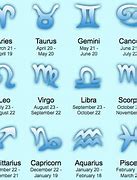
Google Maps Indonesia Terbaru
Add placemark to Bola
No placemark has been added to this place yet. You can add the first.
Bola hotel reservations
detailed map of Bola and near places
Welcome to the Bola google satellite map! This place is situated in Mussende, Cuanza Sul, Angola, its geographical coordinates are 10° 8' 0" South, 16° 22' 0" East and its original name (with diacritics) is Bola. See Bola photos and images from satellite below, explore the aerial photographs of Bola in Angola. Bola hotels map is available on the target page linked above.
Do you like this map? Link to it or recommend it!
Register at Bola or add new placemark for Bola.Get your personal map homepage and much more for free.
Google's web mapping service (launched 2005)
Screenshot of Google Maps in a web browser
Afrikaans, Azerbaijani, Indonesian, Malay, Bosnian, Catalan, Czech, Danish, German (Germany), Estonian, English (United States), Spanish (Spain), Spanish (Latin America), Basque, Filipino, French (France), Galician, Croatian, Zulu, Icelandic, Italian, Swahili, Latvian, Lithuanian, Hungarian, Dutch, Norwegian, Uzbek, Polish, Portuguese (Brazil), Portuguese (Portugal), Romanian, Albanian, Slovak, Slovenian, Finnish, Swedish, Vietnamese, Turkish, Greek, Bulgarian, Kyrgyz, Kazakh, Macedonian, Mongolian, Russian, Serbian, Ukrainian, Georgian, Armenian, Hebrew, Urdu, Arabic, Persian, Amharic, Nepali, Hindi, Marathi, Bengali, Punjabi, Gujarati, Tamil, Telugu, Kannada, Malayalam, Sinhala, Thai, Lao, Burmese, Khmer, Korean, Japanese, Simplified Chinese, Traditional Chinese
Google Maps is a web mapping platform and consumer application offered by Google. It offers satellite imagery, aerial photography, street maps, 360° interactive panoramic views of streets (Street View), real-time traffic conditions, and route planning for traveling by foot, car, bike, air (in beta) and public transportation. As of 2020[update], Google Maps was being used by over one billion people every month around the world.[1]
Google Maps began as a C++ desktop program developed by brothers Lars and Jens Rasmussen in Australia at Where 2 Technologies. In October 2004, the company was acquired by Google, which converted it into a web application. After additional acquisitions of a geospatial data visualization company and a real-time traffic analyzer, Google Maps was launched in February 2005.[2] The service's front end utilizes JavaScript, XML, and Ajax. Google Maps offers an API that allows maps to be embedded on third-party websites,[3] and offers a locator for businesses and other organizations in numerous countries around the world. Google Map Maker allowed users to collaboratively expand and update the service's mapping worldwide but was discontinued from March 2017. However, crowdsourced contributions to Google Maps were not discontinued as the company announced those features would be transferred to the Google Local Guides program,[4] although users that are not Local Guides can still contribute.
Google Maps' satellite view is a "top-down" or bird's-eye view; most of the high-resolution imagery of cities is aerial photography taken from aircraft flying at 800 to 1,500 feet (240 to 460 m), while most other imagery is from satellites.[5] Much of the available satellite imagery is no more than three years old and is updated on a regular basis, according to a 2011 report.[6] Google Maps previously used a variant of the Mercator projection, and therefore could not accurately show areas around the poles.[7] In August 2018, the desktop version of Google Maps was updated to show a 3D globe. It is still possible to switch back to the 2D map in the settings.
Google Maps for mobile devices were first released in 2006; the latest versions feature GPS turn-by-turn navigation along with dedicated parking assistance features. By 2013, it was found to be the world's most popular smartphone app, with over 54% of global smartphone owners using it.[8] In 2017, the app was reported to have two billion users on Android, along with several other Google services including YouTube, Chrome, Gmail, Search, and Google Play.
Google Maps first started as a C++ program designed by two Danish brothers, Lars and Jens Eilstrup Rasmussen, and Noel Gordon and Stephen Ma, at the Sydney-based company Where 2 Technologies, which was founded in early 2003. The program was initially designed to be separately downloaded by users, but the company later pitched the idea for a purely Web-based product to Google management, changing the method of distribution.[9] In October 2004, the company was acquired by Google Inc.[10] where it transformed into the web application Google Maps. The Rasmussen brothers, Gordon and Ma joined Google at that time.
In the same month, Google acquired Keyhole, a geospatial data visualization company (with investment from the CIA), whose marquee application suite, Earth Viewer, emerged as the Google Earth application in 2005 while other aspects of its core technology were integrated into Google Maps.[11] In September 2004, Google acquired ZipDash, a company that provided real-time traffic analysis.[12]
The launch of Google Maps was first announced on the Google Blog on February 8, 2005.[13]
In September 2005, in the aftermath of Hurricane Katrina, Google Maps quickly updated its satellite imagery of New Orleans to allow users to view the extent of the flooding in various parts of that city.[14][15]
As of 2007, Google Maps was equipped with a miniature view with a draggable rectangle that denotes the area shown in the main viewport, and "Info windows" for previewing details about locations on maps.[16] As of 2024, this feature had been removed (likely several years prior).
On November 28, 2007, Google Maps for Mobile 2.0 was released.[17][18][19] It featured a beta version of a "My Location" feature, which uses the GPS / Assisted GPS location of the mobile device, if available, supplemented by determining the nearest wireless networks and cell sites.[18][19] The software looks up the location of the cell site using a database of known wireless networks and sites.[20][21] By triangulating the different signal strengths from cell transmitters and then using their location property (retrieved from the database), My Location determines the user's current location.[22]
On September 23, 2008, coinciding with the announcement of the first commercial Android device, Google announced that a Google Maps app had been released for its Android operating system.[23][24]
In October 2009, Google replaced Tele Atlas as their primary supplier of geospatial data in the US version of Maps and used their own data.[25]
On April 19, 2011, Map Maker was added to the American version of Google Maps, allowing any viewer to edit and add changes to Google Maps. This provides Google with local map updates almost in real-time instead of waiting for digital map data companies to release more infrequent updates.
On January 31, 2012, Google, due to offering its Maps for free, was found guilty of abusing the dominant position of its Google Maps application and ordered by a court to pay a fine and damages to Bottin Cartographer, a French mapping company.[26] This ruling was overturned on appeal.[27]
In June 2012, Google started mapping the UK's rivers and canals in partnership with the Canal and River Trust. The company has stated that "it would update the program during the year to allow users to plan trips which include locks, bridges and towpaths along the 2,000 miles of river paths in the UK."[28]
In December 2012, the Google Maps application was separately made available in the App Store, after Apple removed it from its default installation of the mobile operating system version iOS 6 in September 2012.[29]
On January 29, 2013, Google Maps was updated to include a map of North Korea.[30] As of May 3, 2013[update], Google Maps recognizes Palestine as a country, instead of redirecting to the Palestinian territories.[31]
In August 2013, Google Maps removed the Wikipedia Layer, which provided links to Wikipedia content about locations shown in Google Maps using Wikipedia geocodes.[32]
On April 12, 2014, Google Maps was updated to reflect the annexation of Ukrainian Crimea by Russia. Crimea is shown as the Republic of Crimea in Russia and as the Autonomous Republic of Crimea in Ukraine. All other versions show a dotted disputed border.[33]
In April 2015, on a map near the Pakistani city of Rawalpindi, the imagery of the Android logo urinating on the Apple logo was added via Map Maker and appeared on Google Maps. The vandalism was soon removed and Google publicly apologized.[34] However, as a result, Google disabled user moderation on Map Maker, and on May 12, disabled editing worldwide until it could devise a new policy for approving edits and avoiding vandalism.[35]
On April 29, 2015, users of the classic Google Maps were forwarded to the new Google Maps with the option to be removed from the interface.[36]
On July 14, 2015, the Chinese name for Scarborough Shoal was removed after a petition from the Philippines was posted on Change.org.[37]
On June 27, 2016, Google rolled out new satellite imagery worldwide sourced from Landsat 8, comprising over 700 trillion pixels of new data.[38] In September 2016, Google Maps acquired mapping analytics startup Urban Engines.[39]
In 2016, the Government of South Korea offered Google conditional access to the country's geographic database – access that already allows indigenous Korean mapping providers high-detail maps. Google declined the offer, as it was unwilling to accept restrictions on reducing the quality around locations the South Korean Government felt were sensitive (see restrictions on geographic data in South Korea).[40]
On October 16, 2017, Google Maps was updated with accessible imagery of several planets and moons such as Titan, Mercury, and Venus, as well as direct access to imagery of the Moon and Mars.[41][42]
In May 2018, Google announced major changes to the API structure starting June 11, 2018. This change consolidated the 18 different endpoints into three services and merged the basic and premium plans into one pay-as-you-go plan.[43] This meant a 1400% price raise for users on the basic plan, with only six weeks of notice. This caused a harsh reaction within the developers community.[44] In June, Google postponed the change date to July 16, 2018.
In August 2018, Google Maps designed its overall view (when zoomed out completely) into a 3D globe dropping the Mercator projection that projected the planet onto a flat surface.[45]
In January 2019, Google Maps added speed trap and speed camera alerts as reported by other users.[46][47]
On October 17, 2019, Google Maps was updated to include incident reporting, resembling a functionality in Waze which was acquired by Google in 2013.[48]
In December 2019, Incognito mode was added, allowing users to enter destinations without saving entries to their Google accounts.[49]
In February 2020, Maps received a 15th anniversary redesign.[50] It notably added a brand-new app icon, which now resembles the original icon in 2005.
On September 23, 2020, Google announced a COVID-19 Layer update for Google maps, which is designed to offer a seven-day average data of the total COVID-19-positive cases per 100,000 people in the area selected on the map. It also features a label indicating the rise and fall in the number of cases.[51]
In January 2021, Google announced that it would be launching a new feature displaying COVID-19 vaccination sites.[52]
In January 2021, Google announced updates to the route planner that would accommodate drivers of electric vehicles. Routing would take into account the type of vehicle, vehicle status including current charge, and the locations of charging stations.[53]
In June 2022, Google Maps added a layer displaying air quality for certain countries.[54]
In September 2022, Google removed the COVID-19 Layer from Google Maps due to lack of usage of the feature.[55]
Hotels nearest to the centre of Bola
Artistic and literary uses
The German "geo-novel" Senghor on the Rocks (2008) presents its story as a series of spreads showing a Google Maps location on the left and the story's text on the right. Annika Richterich explains that the "satellite pictures in Senghor on the Rocks illustrate the main character's travel through the West-African state of Senegal".[247]
Artists have used Google Street View in a range of ways. Emilio Vavarella's The Google Trilogy includes glitchy images and unintended portraits of the drivers of the Street View cars.[248] The Japanese band group inou used Google Street View backgrounds to make a music video for their song EYE.[249] The Canadian band Arcade Fire made a customized music video that used Street View to show the viewer their own childhood home.[250][251]
Links to related articles
Wir verwenden Cookies und Daten, um
Wenn Sie „Alle akzeptieren“ auswählen, verwenden wir Cookies und Daten auch, um
Wenn Sie „Alle ablehnen“ auswählen, verwenden wir Cookies nicht für diese zusätzlichen Zwecke.
Nicht personalisierte Inhalte werden u. a. von Inhalten, die Sie sich gerade ansehen, Aktivitäten in Ihrer aktiven Suchsitzung und Ihrem Standort beeinflusst. Nicht personalisierte Werbung wird von den Inhalten, die Sie sich gerade ansehen, und Ihrem ungefähren Standort beeinflusst. Personalisierte Inhalte und Werbung können auch relevantere Ergebnisse, Empfehlungen und individuelle Werbung enthalten, die auf früheren Aktivitäten in diesem Browser, etwa Suchanfragen bei Google, beruhen. Sofern relevant, verwenden wir Cookies und Daten außerdem, um Inhalte und Werbung altersgerecht zu gestalten.
Wählen Sie „Weitere Optionen“ aus, um sich zusätzliche Informationen anzusehen, einschließlich Details zum Verwalten Ihrer Datenschutzeinstellungen. Sie können auch jederzeit g.co/privacytools besuchen.
Wir verwenden Cookies und Daten, um
Wenn Sie „Alle akzeptieren“ auswählen, verwenden wir Cookies und Daten auch, um
Wenn Sie „Alle ablehnen“ auswählen, verwenden wir Cookies nicht für diese zusätzlichen Zwecke.
Nicht personalisierte Inhalte werden u. a. von Inhalten, die Sie sich gerade ansehen, Aktivitäten in Ihrer aktiven Suchsitzung und Ihrem Standort beeinflusst. Nicht personalisierte Werbung wird von den Inhalten, die Sie sich gerade ansehen, und Ihrem ungefähren Standort beeinflusst. Personalisierte Inhalte und Werbung können auch relevantere Ergebnisse, Empfehlungen und individuelle Werbung enthalten, die auf früheren Aktivitäten in diesem Browser, etwa Suchanfragen bei Google, beruhen. Sofern relevant, verwenden wir Cookies und Daten außerdem, um Inhalte und Werbung altersgerecht zu gestalten.
Wählen Sie „Weitere Optionen“ aus, um sich zusätzliche Informationen anzusehen, einschließlich Details zum Verwalten Ihrer Datenschutzeinstellungen. Sie können auch jederzeit g.co/privacytools/com_my besuchen.
Wir verwenden Cookies und Daten, um
Wenn Sie „Alle akzeptieren“ auswählen, verwenden wir Cookies und Daten auch, um
Wenn Sie „Alle ablehnen“ auswählen, verwenden wir Cookies nicht für diese zusätzlichen Zwecke.
Nicht personalisierte Inhalte werden u. a. von Inhalten, die Sie sich gerade ansehen, Aktivitäten in Ihrer aktiven Suchsitzung und Ihrem Standort beeinflusst. Nicht personalisierte Werbung wird von den Inhalten, die Sie sich gerade ansehen, und Ihrem ungefähren Standort beeinflusst. Personalisierte Inhalte und Werbung können auch relevantere Ergebnisse, Empfehlungen und individuelle Werbung enthalten, die auf früheren Aktivitäten in diesem Browser, etwa Suchanfragen bei Google, beruhen. Sofern relevant, verwenden wir Cookies und Daten außerdem, um Inhalte und Werbung altersgerecht zu gestalten.
Wählen Sie „Weitere Optionen“ aus, um sich zusätzliche Informationen anzusehen, einschließlich Details zum Verwalten Ihrer Datenschutzeinstellungen. Sie können auch jederzeit g.co/privacytools besuchen.
Kami menggunakan cookie dan data untuk
Jika Anda memilih “Terima semua”, kami juga akan menggunakan cookie dan data untuk
Jika Anda memilih “Tolak semua”, kami tidak akan menggunakan cookie untuk tujuan tambahan tersebut.
Konten yang tidak dipersonalisasi dipengaruhi oleh hal-hal seperti konten yang sedang Anda lihat, aktivitas di sesi Penelusuran Anda yang aktif, dan lokasi Anda. Iklan yang tidak dipersonalisasi dipengaruhi oleh konten yang sedang Anda lihat dan lokasi umum Anda. Konten dan iklan yang dipersonalisasi juga dapat menyertakan hasil, rekomendasi, dan iklan yang disesuaikan yang lebih relevan berdasarkan aktivitas sebelumnya dari browser ini, seperti penelusuran Google sebelumnya. Kami juga menggunakan cookie dan data untuk menyesuaikan pengalaman agar sesuai usia pengguna, jika relevan.
Pilih “Opsi lainnya” untuk melihat informasi tambahan, termasuk detail tentang cara mengelola setelan privasi Anda. Anda juga dapat membuka g.co/privacytools kapan saja.
Bola Map — Satellite Images of Bola
: Mussende, Cuanza Sul, Angola, Africa
: 10° 8' 0" South, 16° 22' 0" East
Bola google map link options
There are several options how to link to our maps — including no elsewhere to find free google maps gazetteer search, ready to use on your website. Please choose in the list below and simply copy & paste mentioned HTML code into your page source code. Thank you for all links!
IMPORTANT NOTE: The map search box code must be pasted directly into web pages without modification. You are not allowed to alter any portion of the link code or change the layout or targeting for any reason.
Maplandia.com is not sponsored by or affiliated with Google.
Kirim masukan terkait...
Pusat Bantuan Penelusuran
Halo teman-teman, kembali lagi dengan saya Renra Sedoya, masih di Channel YouTube Digimaya. Channel YouTube yang membahas seputar Google Ads, Google Analytics dan Google Tag Manager. Di video kali ini, saya akan menjelaskan bagaimana cara membuat iklan di Google Maps.
Jadi, contoh iklannya seperti ini ya kalau kita lihat di layar monitor ini, misalnya saya mengetikkan “kursus web programming jakarta”, nanti di sini akan ada hasil pencariannya dan di sini kita lihat ada sponsored atau iklan.
Nah, bagaimana caranya kita ingin promosikan bisnis kita agar bisa muncul di bagian atas, tapi di tampilan Google Maps?
Get more out of Bola map
Bola hotels: low rates, no booking fees, no cancellation fees.
Maplandia.com in partnership with Booking.com offers highly competitive rates for all types of hotels in Bola, from affordable family hotels to the most luxurious ones. Booking.com, being established in 1996, is longtime Europe’s leader in online hotel reservations.
At Maplandia.com you won't be charged any booking fees, cancellation fees, or administration fees – the reservation service is free of charge. The reservation system is secure and your personal information and credit card is encrypted.
We have put together also a carefully selected list of recommended hotels in Bola, only hotels with the highest level of guest satisfaction are included.
The location of each Bola hotel listed is shown on the detailed zoomable map. Moreover, Bola hotel map is available where all hotels in Bola are marked. You can easily choose your hotel by location.
Many photos and unbiased Bola hotel reviews written by real guests are provided to help you make your booking decision.
Luxury hotels (including 5 star hotels and 4 star hotels) and cheap Bola hotels (with best discount rates and up-to-date hotel deals) are both available in separate lists. Always bear in mind that with Maplandia.com and Booking.com the best price is guaranteed!



